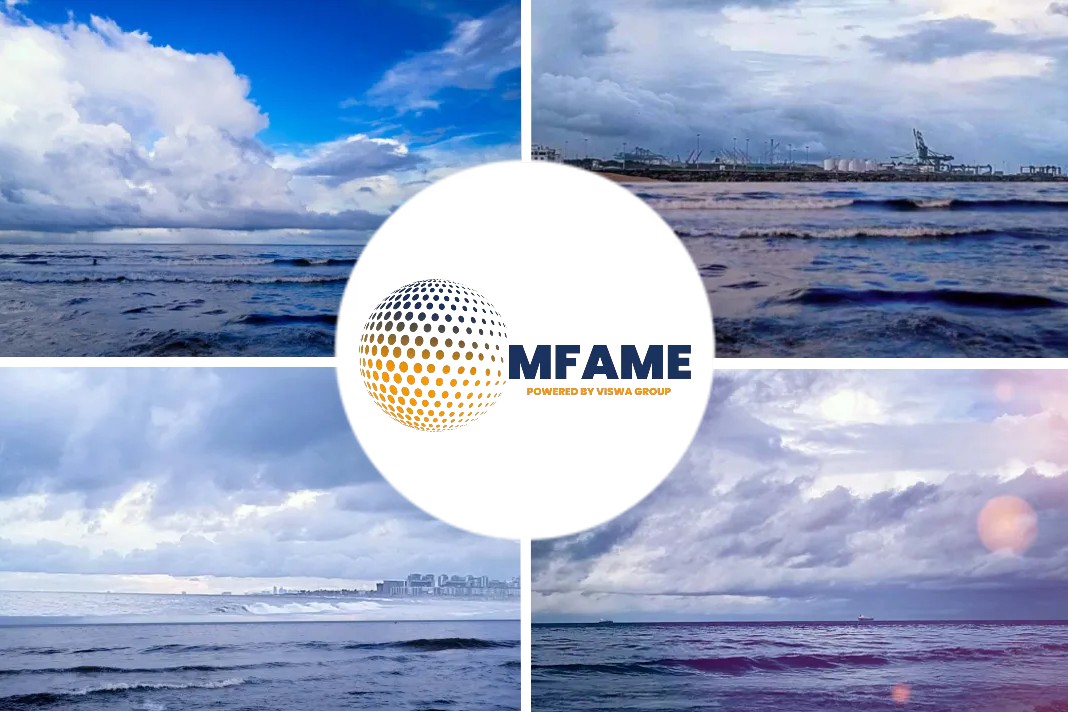
- Researchers have developed a machine-learning algorithm to pinpoint ship tracks automatically in satellite imagery.
- The researchers analyzed 1 year’s worth of nighttime observations obtained by the MODIS instrument aboard NASA’s Aqua satellite.
- Ship tracks look darker than regular clouds in the mid-wave infrared, they compared the difference between the two channels and looked for features that were darker.
- Using this method, they trained a deep neural network model to flag areas corresponding to ship tracks.
According to an article published in EOS Earth & Space Science News, tens of thousands of ship tracks—cloud structures created when ships’ exhaust plumes interact with the atmosphere—are pinpointed automatically, furthering the study of these climate-altering features.
Clouds formed by cargo ships
Cargo ships transport cars, clothing, and electronics that permeate our everyday lives, and they also leave a mark on clouds. That’s because aerosol particles in ship exhaust interact with clouds to create ship tracks: long, thin structures in the sky that resemble aircraft contrails.
ML algorithm to pinpoint ship tracks
Researchers now have developed a machine-learning algorithm to pinpoint ship tracks automatically in satellite imagery, an advance that will help scientists gather larger samples of these cloud features to better understand their microphysics and how they affect local climates.
“The pollution is modifying cloud properties and making them brighter in the visible channels. First spotted in the 1960s, ship tracks are caused by water vapor condensing around aerosols emitted in exhaust plumes. The resulting droplets are efficient at scattering light, so they appear brighter than the surrounding clouds. The pollution is modifying cloud properties and making them brighter in the visible channels,” said Tianle Yuan, an atmospheric scientist at NASA’s Goddard Space Flight Center in Greenbelt, Md., and the University of Maryland, Baltimore County.
As a result, ship tracks—which last from a few hours to days—efficiently reflect sunlight and may help cool the local climate, said Yuan
Understanding of ship tracks’
But an understanding of ship tracks’ microphysics and the degree to which these features affect the climate have remained elusive. That’s in part because observations of ship tracks are relatively scarce: Many previous studies have manually identified ship tracks, a time-consuming process. Yuan and his colleagues now have trained a machine-learning algorithm to automatically spot ship tracks off the western coasts of Canada and the United States.
Capturing the Pattern of Shipping Routes
The researchers analyzed 1 year’s worth of nighttime observations obtained by the Moderate Resolution Imaging Spectroradiometer (MODIS) instrument aboard NASA’s Aqua satellite.
They focused on two MODIS channels: one in the mid-wave infrared near 3.7 micrometers and one in the thermal infrared near 11.0 micrometers. Because ship tracks look darker than regular clouds in the mid-wave infrared, Yuan and his colleagues compared the difference between the two channels and looked for features that were darker. Using this method, they trained a deep neural network model to flag areas corresponding to ship tracks.
Yuan and his team recorded over 70,300 ship tracks, more than all previous ship track studies combined. The features they flagged—ranging in length from 10 to 300 kilometers—followed patterns: Routes between Alaska and Vancouver, Seattle, and Portland were obvious, as was traffic to the ports of Los Angeles and San Francisco.
“The model realistically captures the patterns of shipping routes,” the researchers wrote in Geophysical Research Letters last month.
New method to detect tracks
Yuan and his colleagues have developed a “novel method” to detect ship tracks, said Hailong Wang, an atmospheric scientist at the Pacific Northwest National Laboratory in Richland, Wash., not involved in the study. “[These results] provide insights into the processes involved in aerosol-cloud interactions.”
Yuan and colleagues are currently analyzing a larger data set of satellite imagery obtained from 2000 to 2019 to find more ship tracks. “We’re running global-scale data,” said Yuan.
Find pollution patterns
In the future, the scientists also want to study individual ship tracks using observations from geostationary satellites like the Geostationary Operational Environmental Satellite system.
By homing in on a set of ship tracks, Yuan and his team can study the physics and chemistry of the region to better understand how ship tracks are affecting the environment. “Once we find ship tracks, we can collocate the ship tracks with other satellite instruments to observe, for example, precipitation properties,” said Yuan.
Studying these features now is important because ship tracks may become rarer in the future, said Yuan. That’s because changes in marine regulations requiring cleaner-burning ship fuel will take effect in 2020.
“The new regulations will likely reduce particle emissions from ships, which would make the formation of ship tracks less likely,” he said.
Did you subscribe to our daily newsletter?
It’s Free! Click here to Subscribe!
Source: Earth&SpaceScienceNews














